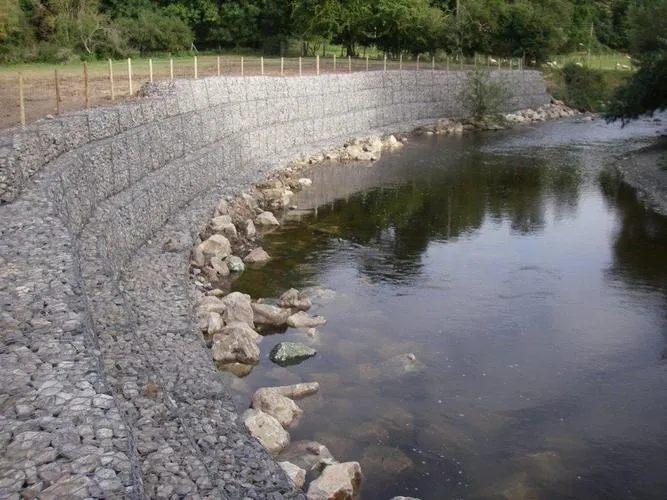-
 Phone:
Phone: -
 Email:
Email:

Installation Techniques for Rockfall Netting Systems in Hazard-Prone Areas
Rockfall Netting Installation Ensuring Safety and Stability in Vulnerable Areas
Rockfalls are a persistent geological hazard that can pose significant risks to infrastructure, human safety, and the environment. Areas characterized by steep slopes, loose rock formations, or unstable geological materials are particularly susceptible to these events. To mitigate the dangers associated with rockfalls, the installation of rockfall netting has emerged as an effective solution. This article delves into the importance, methods, and benefits of rockfall netting installation.
Understanding Rockfall Netting
Rockfall netting is a protective barrier system designed to contain and control falling rocks on slopes and cliffs. It consists of a network of high-tensile strength wires or mesh that is anchored to the ground and designed to catch rocks before they can cause damage. The primary purpose of rockfall netting is to enhance safety by preventing rock debris from reaching roads, buildings, and other critical infrastructure.
Importance of Rockfall Netting Installation
The installation of rockfall netting is crucial in areas where the risk of rockfalls is high. Factors contributing to rockfalls include weathering, freeze-thaw cycles, seismic activity, and human-induced changes to the landscape. By installing rockfall netting, organizations and governments can protect lives, preserve property, and maintain access to essential transportation routes. Moreover, the presence of rockfall netting can significantly reduce cleanup and repair costs associated with rockfall incidents.
Installation Process
The installation of rockfall netting involves several key steps
1. Site Assessment The first step is to conduct a comprehensive assessment of the site. This includes analyzing the geological conditions, identifying potential rockfall zones, and understanding the size and frequency of rockfall events in the area. This data is essential for designing an effective netting system.
2. Design Based on the site assessment, engineers develop a tailored design that addresses the specific risks involved. Factors such as the type of netting, anchor spacing, and overall layout must be considered to ensure maximum effectiveness.
rockfall netting installation

3. Preparation The installation site must be prepared by clearing loose debris and ensuring that the surface is smooth to allow for proper anchoring of the netting system. This phase may involve minor excavation or grading.
4. Installation The netting is anchored into place using cables and support systems. The installation process requires careful handling and precise measurements to ensure that the netting is securely fastened and properly tensioned. Depending on the design, additional items like rock bolts or shotcrete may also be utilized to enhance safety.
5. Post-Installation Monitoring After installation, it is vital to monitor the performance of the netting system regularly. Periodic inspections help identify any wear and tear or potential failures in the netting, allowing for timely repairs and maintenance.
Benefits of Rockfall Netting
The benefits of rockfall netting installation are manifold
- Safety The primary advantage is the enhanced safety it provides to individuals and properties near potentially hazardous slopes. By catching falling rocks, netting systems significantly reduce injury and fatalities.
- Cost-Effective Although the upfront costs of installation can be considerable, the long-term cost savings from preventing rockfall incidents, repairs, and safety-related expenditures make it a prudent investment.
- Environmental Conservation Effective rockfall control protects not only human habitats but also wildlife and natural ecosystems. By managing rockfall risks, we preserve landscapes that could otherwise be damaged by such geological events.
- Durability and Longevity Modern rockfall netting systems are designed to withstand harsh environmental conditions and have a long lifespan. With proper maintenance, they can provide protection for decades.
In conclusion, the installation of rockfall netting is a vital measure for enhancing safety and stability in areas prone to rockfall hazards. As our understanding of geological risks improves, and as technology advances, rockfall netting will play an even more significant role in safeguarding communities and infrastructure from the impacts of nature. Investing in such protective measures is not just an option—it is a necessity for those living in rockfall-prone regions.
-
Wire Mesh for Every Need: A Practical SolutionNewsJul.25,2025
-
Steel Fences: Durable, Secure, and Stylish OptionsNewsJul.25,2025
-
Roll Top Fencing: A Smart Solution for Safety and SecurityNewsJul.25,2025
-
Cattle Farm Fencing Solutions for Maximum SecurityNewsJul.25,2025
-
Affordable Iron Binding Wire SolutionsNewsJul.25,2025
-
Affordable Galvanized Wire SolutionsNewsJul.25,2025
-
Wire Hanger Recycling IdeasNewsJul.25,2025








